– Welcome everyone to Wednesday Nite @ the Lab. I’m Tom Zinnen. I work here at the UW-Madison Biotechnology Center. I also work for the Division of Extension here. And on behalf of those folks and our other co-organizers, Wisconsin Public Television, the Wisconsin Alumni Association, and the UW-Madison Science Alliance, thanks again for coming to Wednesday Nite @ the Lab. We do this every Wednesday night, 50 times a year. Tonight, it’s my pleasure to welcome Daniel Wright of the Department of Civil and Environmental Engineering here. This is a night of perfect weather. And the irony is we have perfect weather to talk about what’s up with all these storms and floods. [audience chuckling] Daniel was born in Ann Arbor, Michigan, and went to high school in Chelsea, Michigan.
Then he went to the University of Michigan and studied civil and environmental engineering. Then he went to the Peace Corps for, two years?
– Two years.
– In Bolivia. And then he came back to the U. S. and went to Princeton University and got his PhD in civil and environmental engineering. Then he did a postdoc at the Goddard Space Flight Center near Washington, D. C. In January 2016, he came here to UW-Madison. I want to point out that in 2018, he won a National Science Foundation CAREER grant.
I think they give away maybe 30 of those a year across the country. That was one of the events that I got to write the speeches for for the director of the National Science Foundation, so anytime I introduce somebody that got a CAREER grant, it’s like, whoa. [audience laughing] That’s pretty impressive. So, please join me in welcoming Daniel Wright to talk about What’s Up With All These Storms and Floods here at Wednesday Nite @ the Lab. [audience applauding]
– Okay, I’m also very appreciative of everybody coming out tonight. It’s great to see an almost-full room. And yes, indeed, we are going to talk about what’s up with all these storms and floods. I was asked to try to throw a little bit of my own journey as a scientist into this talk, so I’ll try to do that a little bit up front just by sharing one little piece. You heard that I was a postdoctoral research fellow at Goddard Space Flight Center. That’s one of NASA’s research and development campuses.
It’s just on the road towards Baltimore, just north of Washington, D. C. And so, I was living in Washington, D. C. , at the time. And have any of you spent any significant time in Washington, D. C. , in the past? Yeah, so a fair number of you. So, you know the thing that happens in D. C.
when you meet somebody for the first time, they immediately ask you what you do, I think probably ’cause they want something from you or they’re trying to figure out if they can get something from you. So anyways, I would tell them that I work at NASA and I work on floods. And then they get a real confused look on their face [audience laughing] and they come back with, “So, floods on Mars?” [audience laughing] Which is not such a crazy question, really, when you look at an image like this. So, that’s an artist’s rendition of the surface of Mars. And it does actually look from that image that floods did happen there at some point in time. We’re going to keep things squarely on planet Earth this evening, and so, just, I’ll tell you why I was spending time at NASA. So, this video here is showing what we call the constellation of satellites that are part of the Global Precipitation Measurement mission, and so some of these are from NASA, some of them are from NOAA, and some are from other space agencies around the world. And together, over the course of a day or so, they can end up filling in a nice picture of what precipitation over the entire globe might look like. And so, after taking the satellite images from all of these different satellites and stitching them together, you can get some nice images like this, which is one day’s worth of precipitation over the entire globe. And this has a ton of useful purposes, both in climate science, weather science, and with what I do, which is trying to understand floods and other hydrologic extremes.
So, I’m not going to say much more about the satellite side of things, but it is a big part of what we do. And so, this is the Hydroclimate Extremes Research Group at UW-Madison. And actually, most of them are sitting there in the back. Why don’t you guys raise your hands? [audience applauding] They’re the ones that end up doing most of the work and I get most of the glory. [audience laughing] What is it that we do? So, I alluded to this on the previous slide, but we look a lot at rainfall and flood measurements and try to understand how accurate they are. And if that doesn’t sound very interesting to you, that’s perfectly reasonable and we’re not going to talk about that tonight. What we’re going to focus on instead is using statistics and computer simulations to study the role of rainfall and other factors, mainly in floods, but we also have a big project with NASA on landslides as well. And then, as engineers, we also work on this last part, which is developing software, both for our own research but also to help other people answer their own sorts of questions. And so, I’m an engineer by training or, I guess, also a hydrologist by training, but we end up doing a little bit of all of these different things and interacting with people from all of those different fields. And so, that’s really one of the nice things about this line of work is that it does bring us into contact with a lot of different folks and a lot of different ideas.
Okay, so let’s start talking about floods. And so, this is a picture from August of last year in East Madison. And just to remind us, I suppose that most of you were around for this, but we had really, really heavy rainfall, upwards of 15 inches in some isolated pockets, falling over the course of about six hours, and that caused, particularly in West Madison and farther west, localized flash flooding. And then, as that water made its way into the chain of lakes, we had some issues with backing up storm sewers and things of that nature. So, that’s one sort of flavor of flooding that you could imagine. This is another one. So, this is a picture that I took at the end of May of this year as we were about to land in Omaha, Nebraska. So, if I’m not mistaken, this, where’s my cursor, here, there it is, so this is the Missouri River back here, I think. Hopefully no one from Omaha can prove me wrong. I should’ve looked at a map ahead of time, but I think that’s right.
And so, you see the interstate is fortunately not under water, but some of these other arterial roads are. And sort of the scale of this picture is much bigger than the one on the previous slide, right? And so, what happened here, and probably many of you are familiar with this, but basically we had a cold winter, we had a lot of snow, we had a cold spring, that snow stuck around for a long time, and then the rains started. And so you had that combination of maybe not quite as intense rainfall but lasting over long time periods, falling on snow, melting it, and this whole mess of things going downstream. And so, the big difference here is not only the scale, so this was all over the Midwest, but also the, I guess, the time scale. So, taking instead of hours to set up, like in Madison, taking weeks or even months to set up. So, this just gets to the point that there are some very different sorts of combinations of processes that can happen to create floods. So, this is earlier this week in Washington, D. C. Again, another example of one of these very brief rainstorms that just dumps a lot of rain and creates all sorts of problems. I’ll come back to that photo in a second.
And then this is from this morning in New Orleans. My understanding is that this situation that was bad in the morning is getting worse by the minute and is not likely to let up any time in the next couple of days, so that’s going to be an interesting one to keep an eye out for. And in this case, a totally separate set of circumstances where you have a developing tropical cyclone that wasn’t present in any of those other previous examples. Okay, so what’s up with all these storms and floods? Well, this is the outline of what we’re going to visit tonight. We’ll start with talking a little bit about what we know, particularly about flood impacts, and I’ll say what I mean by that later on, and then also about increases in temperature and rainfall. From there, talk a bit about how floods occur and why, well, and really, are they changing in a warming climate? The answer’s a little bit complicated. And then look at two examples of the link between climate change and floods that in particular use computer simulations for them, which is a big part of what we end up doing. Then we’ll wrap up with a quick summary and have plenty of time for the Q&A session, which I think is probably the most important part here, so please be thinking of things that you would like to talk about when we reach the end of my presentation. Okay, so floods, as the slide says, they’re the most common natural disaster worldwide. They’re amongst the most impactful.
So, here we can see the total number of federal flood declarations since 1963. If you do the math on this, that works out to about one per day over that time period. And so, from some perspective then, these are sort of an everyday occurrence, even if we might not think of them that way in our own lives. And then, the other thing that you’ll notice is that the Midwest is at least as badly affected by these things as anywhere else in the country. One thing that I forgot to mention in my bio is that I did a short stint at the World Bank before going to NASA. And so, we were working on disaster risk management issues in Latin America and the Caribbean, and as part of that I put together this map. And so, each of those dots is a reported flood. The dot size is in accordance with the number of people who were displaced from their homes. And then we highlight a couple of particular flood events there. So, you see some pretty shocking numbers, right? So, Hurricane Mitch, for example, killing 15,000 people, the Tragedia de Vargas in Venezuela killing 20,000 people, and then floods displacing upwards of a million people or more.
So, really dramatic impacts, and the same is true in other parts of the world as well. Okay, so what do I mean when I say impacts? What I want to do is draw the distinction here between impacts and floods themselves. So, I am a flood researcher, but what I do is really focused on the physical phenomena of floods: how they happen, how often they happen, how they might be changing. But there are other types of flood researchers that focus on different things. So, for example, the economic impacts, the public health impacts, fatalities, mental health impacts, et cetera. And so, I’m going to just review briefly kind of what we know about the impact side of things and then we’ll get into more of the physical phenomena, which is my specialty. So, when it comes to flood fatalities, there’s a lot of good news here, both in the U. S. and elsewhere. So, we see basically no increase in flood fatalities since 1940, despite our population going up by roughly two-and-a-half times.
And that’s largely due to better weather forecasting and better flash flood communication, and that holds up in other parts of the world as well. On the other hand, if you look at economic impacts, so here you can just pay attention to the blue line, and this is global impacts, but this is true perhaps even more so in the U. S. specifically, but these economic impacts are going up and up and up. And climate change could have something to do with this, but really the main driver by far is just the fact that our economies have grown substantially over that time period and a lot of that growth has occurred in flood-prone areas. Another interesting point here, when you look at flood fatalities, basically getting killed in flood is a guy thing. [audience laughing] So, it’s not coincidence here [audience laughing] that this is the kind of, that these two gentlemen are in the situation they’re in and you don’t see any women standing on top of their cars. The basic story is if there’s going to be a flood, just stay home. And then, when it comes to managing the impacts of floods, there is also good, potentially good news, if decision-makers are willing to act on it anyway. So, this is a figure that I took from a World Bank report where they basically were looking at the benefit-cost ratios of different types of investments or at different types of projects that the World Bank likes to get involved with.
And what you see is that both early-warning systems and these measures to reduce damage from, long-term measures to reduce damage from floods are among the most cost-effective types of projects that they deal in. And so, there can be a lot of bang for your buck when it comes to dealing with these sorts of problems. Okay, so now I’m going to shift gears into talking about floods as more of a physical phenomena, but I’m going to start talking about temperature. And the reason for that is really shown in this graph. So, this is what we call the Clausius-Clapeyron Equation in graphical form, I suppose. And so, we have a number of different substances here that are liquids at room temperatures, including water. And the basic story is as the temperature goes up, the vapor pressure of these liquids goes up, specifically the saturation vapor pressure goes up, which, in layman’s terms, just means that these liquids will more readily evaporate into the air. And so, as long as that liquid is present, you’re going to have more of that vapor in the air. And so, that’s of course important then when we’re talking about heavy rainfall because temperatures both regionally and beyond are going up, and so we see certainly increases in recent decades in temperatures in the Upper Midwest. But it’s a little bit more complicated story than this, and this is really where the research is heading these days.
And we need to look beyond just the regional map to bigger maps of the country and even beyond the country itself, because if you think about the heavy rainfall that falls here in Wisconsin, most of that is actually coming from the Gulf of Mexico, and so you might need to worry perhaps even more so about the kinds of temperature changes that are taking place there than what’s happening here. Okay, so we have regional and national perspectives that are important, but we also have local perspectives that are important, and I’m going to give what I think is an interesting example of this much later on in the talk, but I think we can all relate to the fact that urban areas can get quite hot. Basically, your pavement, your buildings, et cetera, can absorb and hold heat much more readily than natural surfaces, and this we call the urban heat island effect. And so, the result is just higher temperatures in urban areas compared to their surroundings. Okay. So, that’s the sort of temperature side of things. And as I said, that’s going to feed into increasing precipitation. This is annual precipitation in Wisconsin. So, here, we’re not necessarily talking about those extreme rainstorms, but rather on a yearly basis what’s happening, and that annual rainfall is going up. And it’s likely to continue going up.
And in fact, here you see an article from Weather Underground where they said the last 12 months have been the wettest 12 consecutive months in U. S. history. Okay, so that’s the sort of annual perspective. This is more on the perspective of extremes. So, this is a paper that actually was accepted to Geophysical Research Letters two days ago. And I just got contacted this morning saying they want to do a press release, so this might actually be coming out to a newspaper near you; we’ll see how it goes. But here we’re looking at storms that are larger than the 10-year storm or larger than the 100-year storm. And so, we don’t need to worry about this too much, but basically 10-year storm has got a 1 in 10 chance of happening in a given year at a given location. 100-year storm, 1 in 100 chance.
The important thing to just keep in mind for our purposes is that 100-year storms are worse than 10-year storms, but they don’t happen as often. Okay. And here we’re looking at the number of these storms that are taking place or that have taken place over the eastern United States, both 10-year storms or storms that exceed the 10-year level, and then storms that exceed the 100-year level, and they’re both going up. They’re going up statistically significantly. And if you look, you’ll see these percentage increases that actually the 100-year storms seem to be happening or the rate of increase is faster than for the 10-year storms. So, that again is a regionable– Regionable. Regional to national perspective, but there are also local factors that are important as well. So, this is a paper from my PhD work. There in the middle, that gray blob is Charlotte, North Carolina. You can find similar results for other cities, but basically this is looking at summertime rainfall, both the total summertime rainfall and in the number of days with greater than an inch of rainfall.
And you see a local peak in rainfall activity around the city. I’m going to come back to that with a more Wisconsin sort of example later on in the talk. Now I’m going to shift gears though to another Wisconsin example, actually, the Madison example of what happened on August 20th. And so, this picture here, first of all, actually, I’m supposed to do it on the screen. So, there we go. So, we have the outline of the Yahara Watershed upstream of Lake Monona, so any rain that falls within this black boundary is going to make its way into the lakes. And then we have, let’s see, all these dots around here. And what these are, these are citizen-operated rain gauges. And so, these are basically weather enthusiasts, they have these sitting in their backyards and every morning they take a look and see how much rain is in there and then there’s a web interface to report that. If any of you in the audience do this, thank you.
It’s incredibly helpful. What we’re able to use that information for is to basically validate and correct weather radar observations. So, the same sort of stuff that you see on The Weather Channel, that’s shown in blue there. But weather radar on its own is not very accurate, and so what we can do is we can compare the weather radar against those observations from the rain gauges and we can adjust it up or down. And so, then at the end of the day, we have a really nice picture, spatially complete picture of a large area of what happened. And when you do that, you pick up some really isolated intense pockets, like right there and right there, of rainfall that was upwards of about 15 inches. Okay, so that’s interesting. One thing that’s worth noting here is that if you actually look at the rain that fell within the watershed though, it’s not a huge amount in the sense that the storm was actually more to the west and southwest. And so, one question that we had was, “Well, what could’ve happened here?” And this shows if that storm had occurred 10 or 15 miles northeast, instead of getting about four and a half inches of rainfall over the watershed, we would’ve been more like eight inches. And so, those of you who were around at that time can start to imagine what that would’ve been like.
Not real great, I don’t think. And so, I mentioned that we do this work developing software. I’m not going to go into the details at all, but the main piece of software is this Rainy Day. I’ve been really working on it since my PhD work. And what it allows us to do, among other things, is put together figures like this, and I’m going to just walk you through what’s going on here. Basically, this is the probability of different amounts of rainfall affecting the Yahara Watershed. And so, four and a half inches, what we actually got, is here, and that works out to about a 20-year storm. So, that’s, you know, rare, but certainly not unheard of and definitely within the realm of the sorts of things that engineers and city planners would be worried about happening. And then, on the other hand, if this more worst-case scenario where the storm had been a direct hit, that would’ve been more like a 200-year storm or even more. And so, if any of you are interested in more information about this, I do have an article in WisContext, I think there’s a link to it on the Wednesday Nite @ the Lab webpage, and I talk about some of these issues in a little more detail.
I’m not going to really say a lot more about what to do about this [laughing] issue going forward. We can talk about that in the Q&A if you like. But I will say a little bit about why– So, some people were calling the flooding like a 100-year flood. I just told you it was a 20-year storm. Where’s the disconnect there? And generally speaking, those sorts of disconnects can happen for the following reasons. Really, the floods are recipes with multiple ingredients. Extreme rainfall’s probably the most important one, but there’s also things like land cover. So, in urban areas, for example, if you pave over everything, where’s that water going to go? And then, other factors like soil moisture. So, by that, what we’re saying is, I guess the easiest way to think about this is if you have a storm that hits and it’s been raining for the past two weeks, it’s going to be a lot worse than if it had been dry for the past two weeks because the soil is not going to be able to soak up very much of that rainfall because the soil moisture is already very high. And then, like any recipe, we have some additional spices.
So, depending on when and where you’re looking, you might have snow involved, agricultural practices, high water levels of various kinds, and the complicated role of infrastructure as well. And so, if you were trying to figure out what the recipe was on August 20th, I would say it’s probably more or less this. But if you wanted to pick some other flood in some other place or some other time, the recipe would be different. Okay. All right, so, we’re now shifting gears from talking mainly about precipitation to talking about floods themselves. And so, a lot of people, including climate scientists that I respect very highly, assume that floods are unequivocally getting worse because of the increases in heavy rainfall that we’ve seen. This paper that came out last year, it’s a review of our sort of state of the understanding of this issue. You can see from the title there, “If Precipitation Extremes are Increasing, Why Aren’t Floods?” So, that seems to suggest that actually what we think must be happening maybe isn’t happening. I’m going to argue a little bit against this over the course of a couple different of examples here, but I want to just highlight one key thing because as scientists, we’re not allowed to just say whatever we think, or we shouldn’t do that anyways. We’re allowed to say whatever we want, I suppose.
We have to have evidence for it. And so, I think that the authors of this paper would also say that things might be happening, but we just don’t have very good evidence for it. And I’ll say a little bit about why that might be the case. So, I’m going to show you a series of plots here that are showing typical datasets that flood researchers would be looking at to try to understand this problem of linkages between climate change and flooding. And so, what we’re looking at here, it says Annual Peak Streamflow. And so, what this really is is in each year, what’s the highest flow rate that that river achieved? And so, then there are, I don’t know how many years there are there, but there’s one data point per year since about 1940 for this particular watershed, which is the Pecatonica River in the southwestern part of the state in the Driftless. And so, what you see here are some pretty significant decreases in flood activity up to about 1980 and then things are pretty stable afterwards. And so, what is going on there? It’s basically improved farm management practices that have substantially decreased the amount of runoff that you get in response to heavy rainfall events. Okay? So, there’s that. This is another watershed.
This is in Milwaukee. There might be, as I’ll show you a bit later on in the talk, there might be a climate change component to what’s going on here. But as I said before, land use is really, really important. This place has urbanized over that time period and so, really, that urbanization is what’s driving this sort of increase in flooding, and similar things can be found in other watersheds in Milwaukee as well. Okay, this is the Iowa River at Iowa City, and it might not be quite as obvious to you. What I see when I look at this is sort of one thing going on and then a drop, and then maybe something starting to happen there towards the end. And that’s exactly what happened here. So, upstream of Iowa City in about 1950, they started building the Coralville Dam specifically to control flooding in Iowa City, and it seems to have done that, although people living in Iowa City would say something seems to be changing there, and I think it’s an open question, and climate is definitely one of the possibilities. Okay, and then the last one here is Turkey River, northeastern Iowa, actually, not very far from the Pecatonica River. This is sort of a pet watershed where we do a lot of our work.
It’ll show up in some of the analyses later on as well. And here, what I see when I look at this is something that’s more or less stable over time, and then towards recent, since maybe 1990, maybe the smaller floods are getting a bit smaller and the bigger floods are getting quite a bit bigger. And so, that might be, and I’m going to show you later on that we actually do think indeed this is an example of climate change. But taken together then, you can start to maybe appreciate the difficulty of parsing out that connection between climate change and floods because you have to end up controlling for all of those other factors. And if you look at watersheds across the country and around the world, essentially, let me back up here, essentially all of them are going to be affected by some of these other factors. And so, how do you know what is what? Well, I’m going to show you two examples where we actually try to step away, at least to a degree, not completely but to a degree, from using observations and instead try to get at this problem using computer simulations. And one of those examples is indeed for this Turkey River, and then the other is for Milwaukee. Okay, so this is Turkey River. You can see it there in the northeastern part of the state. This is very much an agricultural watershed.
There’s really no urban land use to speak of here other than a few small towns here and there. And again, this is another view of that same time series of annual maximum flood observations that we saw a few slides back. So, you see, as we said before, there seems to be this kind of stable behavior over time until about 1990, and then things seem to change with some low floods and some really big floods. And so, this gray line though is the result, it’s what we call a trendline, it’s the result of a statistical analysis. And if you look at that line, it’s just about flat. And so, what you would conclude from that is, well, floods aren’t even changing in Turkey River, let alone changing due to something like climate impacts. Okay, so that’s sort of typical procedure. You could do this, you could get a lot of these sites, you could look at them and run this analysis and see what you find. We did something a little bit different where one of my PhD students, Guo, who’s in the back of the room said, “Well, let’s actually take these data and classify them “just by when during the year they occurred. ” And so we’ve got in blue those floods in March and April and in red those floods in May through September.
And what happens when you do that is that idea of there not being any change taking place completely disappears and you have two statistically significant results that, to some degree, may be, at the annual scale, sort of canceling each other out. But this is an example of how our typical ways of thinking about running these statistical analyses can lead us to very incorrect conclusions about what’s happening. Okay, so what is happening? So, as these trendlines say, springtime floods in Turkey River, they’re decreasing in magnitude, while the summertime floods are increasing. And that’s really important because in Iowa and other places, the summertime floods are the ones that typically are very, very large, although I suppose the spring in western Iowa is a bit of a counterexample to that. Okay, so that is some interesting results based just on observations, but we wanted to attack this from a bit different standpoint here. And I’m not going to go through the details of how this all works, but I’ll say what we’re trying to do is basically instead of just being stuck with 70-odd years of flood observations that we have in Turkey River, wouldn’t it be nice if we could have 10,000 or 100,000 years? I think that would be great, so let’s see if we can figure out how to do it. The way that we do it is we start with this Rainy Day software that I mentioned earlier. And what that can do for us, we saw one example of what it can do earlier on in the talk, but another thing is that it can be used to generate really large numbers of hypothetical rainstorms. And then, what we can do is we can put those hypothetical rainstorms in together with combinations of these other ingredients that you need to produce floods and then run a really large number of computer simulations and then analyze what comes out the other side. Don’t try this at home.
[audience laughing] We don’t try this at home. We try this on very powerful computers. So, originally doing this on NASA’s Center for Climate Simulation system. Now we use this Center for High Throughput Computing at UW-Madison, which is a pretty unique system; well, was unique. Developed here at UW-Madison, now it’s used across the entire world. Basically, what it allows us to do is things like, if a computer lab in this building or other buildings across campus, if those computers are not in use, if it’s in the middle of the night, for example, we can actually push our analyses to those computers and then wake up in the morning and get our results. So, it’s really nice to have a full night’s sleep and feel like you’re getting something done as well. [audience laughing] And then we have a number of other of our own servers mainly for data storage and some computer processing as well. So, that’s a big part of what we do is worry about how to deal with these complicated computer systems. I’m going to show you what one of these simulations, what one of these flood simulations looks like.
So, what you’re going to see– So, this is the watershed here. You can see the river network. It doesn’t turn out so well, but this sort of dendritic network here. And then we have, this is the rainstorm, and you’re going to see it move and you’re going to see the flood that results from it moving its way down that river system. So, there, the storm has passed, but the flood is making its way down. And so, that’s basically just a graphical representation of what our computer models are doing. And so, you don’t have to worry too much about the details here. I’m going to just give you the key points. But this is showing the results of, how many simulations is this?
– Man: 10,000.
– Daniel: 10,000, okay. And each of these 10,000 hypothetical events, we have the amount of rainfall that fell, we have the flood magnitude that resulted. It’s a little hard to tell, but the dot sizes here correspond to how much soil moisture is present. Blue dots have snow involved in some way or another. So, we can look at all sorts of different things and we can look at that for past conditions, we can look at it for present conditions. And what we end up finding is that fewer floods these days are being caused by this combination of moderate rainfall on top of snow, so fewer of these springtime floods. More are being caused by high soil moisture plus extreme rainfall in the summertime. And then, I think what the most important point is, at least for engineers and planners, is that what used to be the 100-year flood in Turkey River is now about a 20-year flood, meaning it’s happening about five times as often as we expected it to and five times as often as all the infrastructure that’s in place is supposed to be able to withstand. Okay, so that’s Turkey River. Let’s go to a bit more urban example. So, this is another paper from my PhD work.
This gray blob here is Milwaukee, and we’re going to focus just very briefly on Cedar Creek, which is north of Milwaukee, relatively unurbanized, and then Menomonee River, which is much more heavily urbanized. And if you take those annual flood records like we’ve shown for other sites, here we’ve broken them apart by two time periods, an early period and a late period. And the basic story is that in the early period, these two watersheds were behaving not exactly the same, but roughly similarly in terms of when in the year the floods were happening. But now, there’s been a complete turnaround in the Menomonee River and you see almost all of the flood events are taking place in the summertime. And so, my colleague, Long Yang, when he saw this, he really wanted to understand what the explanation was. And so– Oh, here’s another point that’s an important piece of this. So, this is again sticking in the realm of observations. So, on this side, we’ve got radar rainfall measurements, and here we have cloud-to-ground lightning observations. And so, in both of those, you see just a bullseye of heavy thunderstorm activity right over Milwaukee as compared to the surrounding areas. And so, Long was like, “Well, that cannot be purely coincidence.
“It doesn’t make any sense that it would be. ” And so, he did a really interesting set of simulations only for the July 2010 storm, which some of you may remember. That was a pretty bad one in Milwaukee. And what he did was, the two simulations that we’re going to focus on anyways are what we call the control simulation, which is the real world, and then what we’re calling the no urban simulation, where basically he’s taken the urban land cover here, this red and pink, and replaced it just by cropland. And in this case, we’re not using one of these flood simulation models like I showed you for Turkey River. What we’re using instead is this thing that’s called the Weather Research and Forecasting model, so this is actually simulating how the atmosphere is working. And so, instead of rainfall being an input to the model, it’s actually simulating rainfall within the model. And so, when he ran those simulations, he got the following results. So, if you pull the city out of the simulation so you have that no urban simulation, the peak rainfall for that 2010 storm goes down by more than 50%. Okay, so that’s interesting.
Certainly, the urban area seems to be playing some important role here. And so, urban heat island is part of it, but it’s not the full story. So, I’m going to explain to you what’s going on here, at least for 2010, and we suspect this is going on more generally as well. So, this is, again, an overhead view of the region, but what we’re going to do is we’re going to sort of turn this into a side view in a second and look along this A to B transect. And that’s the transect. So there, we have the city. Then, to the east, we have the lake or in the no urban simulation we have farmland and then the lake. Okay, so I’m going to walk you through what happens here. The July 2010 storm, like other storms in this region, most other storms, moved from the west to the east. Okay, so it’s moving across Wisconsin.
It reaches Milwaukee. Milwaukee’s warm because of this urban heat island effect. What does warm air do? It rises. Okay, when warm air rises, the water that’s held in that air is going to condense and fall out as rain because as the air cools as it rises, it can’t hold as much water vapor. That’s how most heavy rainfall occurs. Okay, so that’s something that we’ve understood pretty well in different cities around the country and around the world. But what happens in Milwaukee is a little more complicated. So, what happens when that air, that storm reaches the city, the air rises, you have rain falling, well, as that air rises, some air has to come and fill in that void down near the ground surface, and the only air that’s there is air that’s over the lake and it’s holding a lot of water vapor because it’s right over that lake and it’s the middle of July. And so, what ends up happening is you have the storm coming in, warm air rising, moisture rushing in, it’s rising, producing more rainfall, also pulling more air in. And so, there’s this feedback loop that ends up making this rainfall much worse than it is in the no urban simulation.
And so, what this figure is showing is actually the wind patterns along that transect. And you see, this is what we call the lake breeze intrusion, where the air off the lake is making its way all the way into the city, whereas here, that moist air from the lake isn’t intruding at all. And so, that’s just a single storm. A colleague and I have a proposal that’s in review right now to hopefully have the chance to understand this a little bit better and in particular to try to understand– So, the Milwaukee Metropolitan Sewage District, for example, has a very ambitious plan, actually the most ambitious plan in the entire country for increasing urban green spaces. And so, can that greenification, I’m not sure that’s a word, but can it help combat this sort of issue in Milwaukee in addition to creating some nice spaces and having those trees to soak up some of that runoff as well. So, fingers crossed on that particular thing. Okay, so that’s basically the end of the talk. [audience laughing] Just to summarize then, on the impact side, floods are becoming less deadly but becoming much more damaging. I think this impact side needs a lot more attention than it has gotten historically. It’s a really difficult thing to look at, and the paper that we just had accepted this week does start to look at this sort of issue, essentially, at a regional or national scale, how adequate is the infrastructure that we have in place compared to what we’re facing these days.
Recent increases in extreme rainfall, it’s really a combination of factors stemming all the way from global to local features, with the Milwaukee example being a clear case of that local effect. And then, despite what our observations say– I showed you that paper that said, “Well, floods don’t seem to be increasing. ” I would say that despite what our observations say, that’s actually not the case, because I, in fact, showed you two examples of how climate is impacting floods. But in order to really understand these sorts of problems, it requires really knowing the place where you’re looking. So, downloading all of the flood measurements from the whole country and just running some analysis is not going to work. You have to understand the specifics of what’s going on. But what you do when you start looking at the specific circumstances in different places and you really understand what’s going on, you see that, yes, the floods are changing due to climate. And so, I’m going to stop there and hopefully we’ve got some time for questions. [audience applauding]
Search University Place Episodes
Related Stories from PBS Wisconsin's Blog

Donate to sign up. Activate and sign in to Passport. It's that easy to help PBS Wisconsin serve your community through media that educates, inspires, and entertains.
Make your membership gift today
Only for new users: Activate Passport using your code or email address
Already a member?
Look up my account
Need some help? Go to FAQ or visit PBS Passport Help
Need help accessing PBS Wisconsin anywhere?

Online Access | Platform & Device Access | Cable or Satellite Access | Over-The-Air Access
Visit Access Guide
Need help accessing PBS Wisconsin anywhere?

Visit Our
Live TV Access Guide
Online AccessPlatform & Device Access
Cable or Satellite Access
Over-The-Air Access
Visit Access Guide
 Passport
Passport







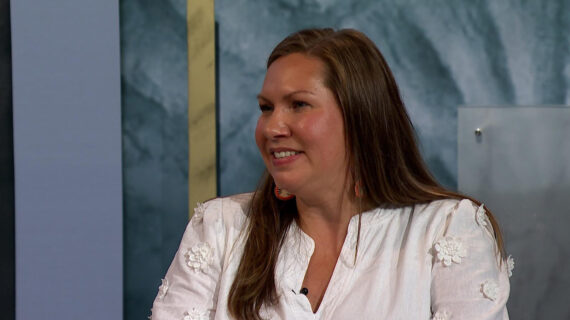
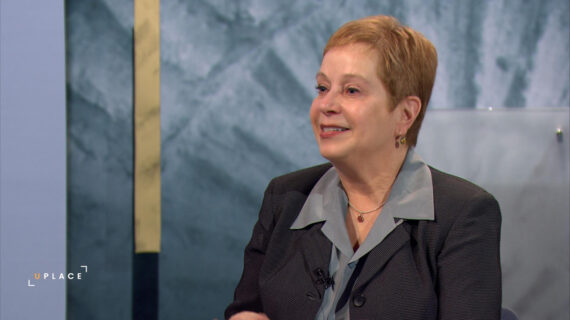
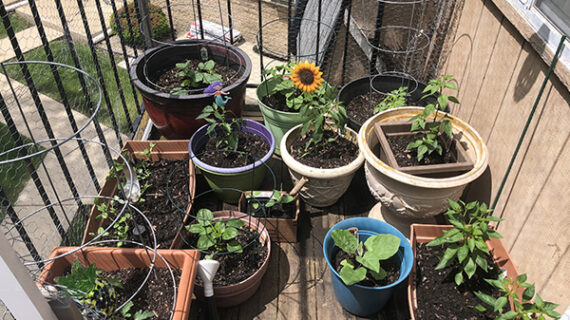
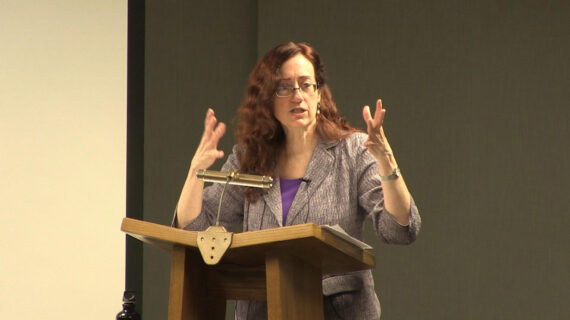
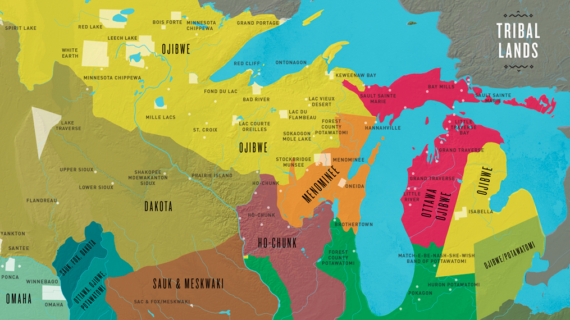

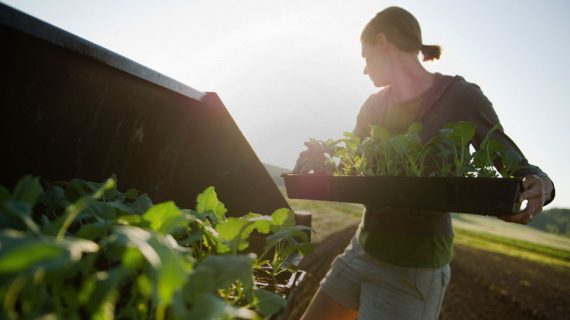
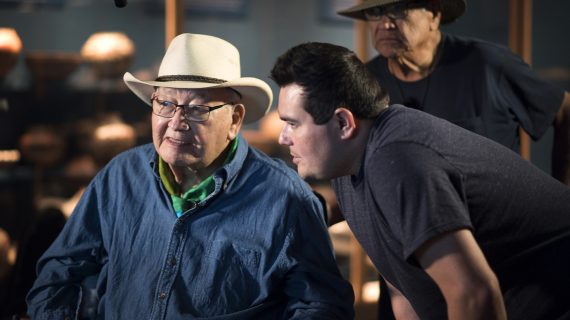



Follow Us